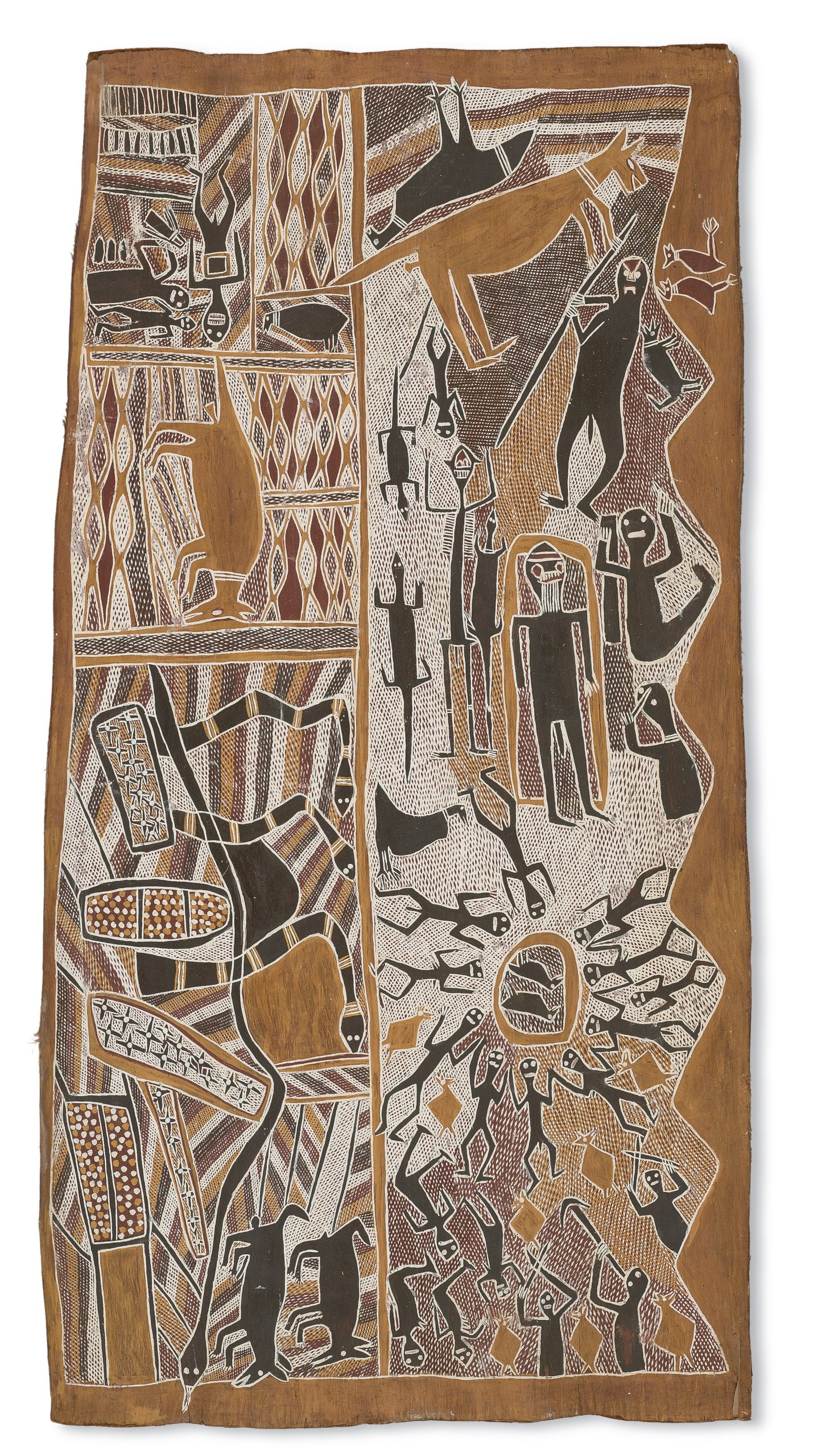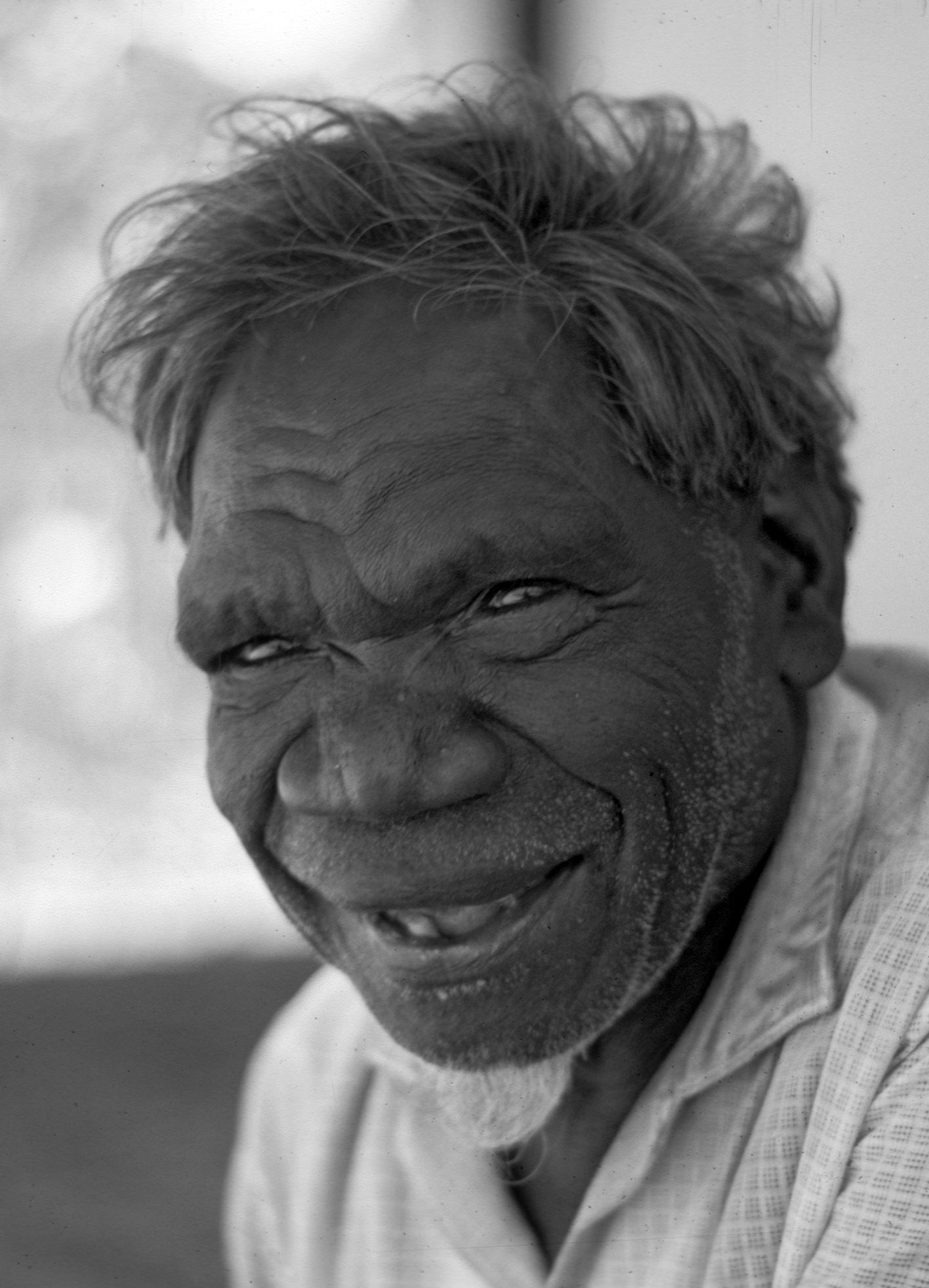
"It was Ganbulapula, our ancestor, who set our future. He was a hard man, to whom leadership was a challenge and aright. He spoke with a tongue of fire and had great strength for action. He knew the songlines. He was the singing man and the ceremonial manager.
Ganbulapula led a funeral ceremony and an initiation ceremony for the Matjurr people. The Ḏamala people and the Matjurr people were the dancers. As a funeral, the ceremony was a grieving for the past. Decorated log coffins lay in the center of the ceremony ground, waiting to receive the bodies of the dead that lay in a shelter of stringybark. This was also a ceremony looking to a new future. Young men were initiated into manhood, families were brought together, and there was a healing of the divisions of the past – an affirmation of a collective determination to go on together. There was an agreement to change, and to find peace through that change.
But others came forward and challenged the ceremony – insiders who thought they knew better. There was fighting and disagreement, confusion and conflict. The ceremony began to disintegrate into a hardening of past divisions, disagreements and oppositions. Ganbulapula would not be denied, though, and he did something extraordinary. He picked up one of the painted log coffins waiting there to receive its body, a coffin saturated with cultural meaning, a living object of power. And he flung it eastwards, a little to the south from Gulkula. It landed in the sea at Djalambu. From Djalambu the hollow log was carried by the tides to other parts of East Arnhem Land. The hollow log became one means by which knowledge was sent out to other groups who were then linked through the sharing of this knowledge."
From the essay Rom Watangu published in The Monthly, July 2016."
– GALARRWUY YUNUPIŊU AM
Additional Information
Decade
c.1971
Medium
Natural pigments on eucalyptus bark
Dimensions (IN)
44 x 22 13/16
Dimensions (CM)
112 x 58
Credit
Museum and Art Gallery of the Northern Territory.
Purchased 1971.
Abart-0008.
Narrative
Gumatj
The Gumatj are a large clan, with homeland communities at Gunyuŋarra, Birany’birany, Dhanaya, Bawaka, Maṯamaṯa...
Songline
Bäru | The Saltwater Crocodile
During the Waŋgarr (ancestral times), there was a woman named Dhamiḻiŋu. She lived with her...
Location
1970s
After the hard-fought legal battles of the previous decade, the 1970s saw the first victories...
About The Artist(s)

Clan
Gumatj
Artist Dates
c.1907-1979
Alternative Names
Mangarawui, Mungurawi, Mungarawoi, Munggaraui, Mangarawoi, Munggurrawuy, Munggeraui
Mungurrawuy Yunupiŋu
Mungurrawuy Yunupiŋu was an important patriarch of the Gumatj clan. He contributed to the Yirrkala Church Panels and was a signatory to the Yirrkala Bark Petitions. His children include the Aboriginal leader and land rights activist Galarrwuy Yunupiŋu; Mandawuy Yunupiŋu, the lead-singer of the band Yothu Yindi; and the acclaimed artists Barrupu, Gulumbu, and Nyapanyapa Yunupiŋu.

